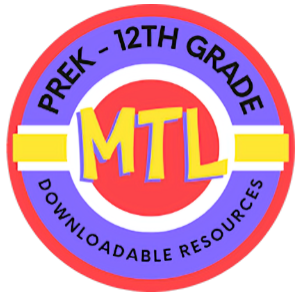Category: By Subject
- Home
- /
- Shop
- /
- By Subject
- /
- Page 7
Showing 121–140 of 1567 resultsSorted by latest
-
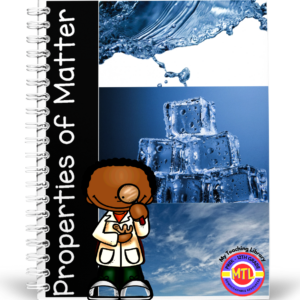 $3.00Buy Now
$3.00Buy NowAn engaging science unit teaching students about the properties of matter through hands-on and thought-provoking activities!
- Lesson 1: Matter (Define)
- Lesson 2: Solid, Liquid, Gas
- Lesson 3: Liquid Experiment
- Lesson 4: Solid Experiment
- Lesson 5: Gas Experiment
- Lesson 6: Liquid to Solid
- Lesson 7: Liquid to Gas
- Lesson 8: Irreversible Change
- Lesson 9: Reversible Change
- Lesson 10: Disassemble Change
-
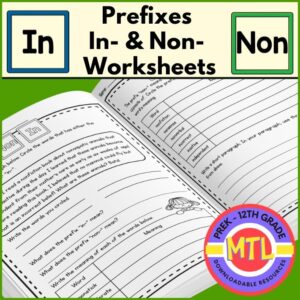 $1.25Buy Now
$1.25Buy NowTwo worksheets (with answer keys) to give students the opportunity to learn about and demonstrate their knowledge of words with the prefixes “in-“ and “non-“. Students will identify words with the prefix and give their meanings. Students will also demonstrate their ability to use those words within a written paragraph.
Words used in this resource:
nonfiction, nonaquatic, nonsense, nonverbal, nonstick, inconsiderate, incorrect, inactive, independent, invisible -
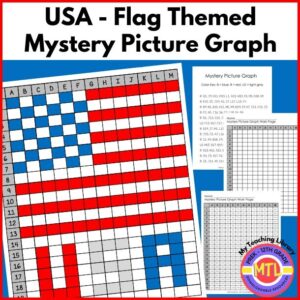 FREEBuy Now
FREEBuy NowThis fun, FREE picture graph is designed to give students practice in finding and plotting coordinates! With a theme of the USA and the American flag, it is perfect to use when studying the U.S. states, government and the flag. You can also use it during American holidays such as Memorial Day and/or the 4th of July!
This is STEM activity for both Math, and Geography.
-
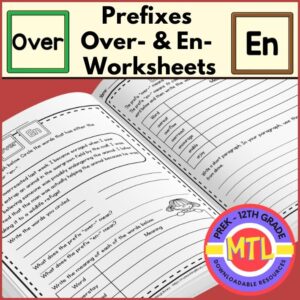 $1.25Buy Now
$1.25Buy NowTwo worksheets (with answer keys) to give students the opportunity to learn about and demonstrate their knowledge of words with the prefixes “over-“ and “en-“. Students will identify words with the prefix and give their meanings. Students will also demonstrate their ability to use those words within a written paragraph.
Words used in this resource:
overeat, overflow, overreact(ed), overstay, overgrown, overload, encourage, endangering, enraged, enable, enrich, enjoy, entrap -
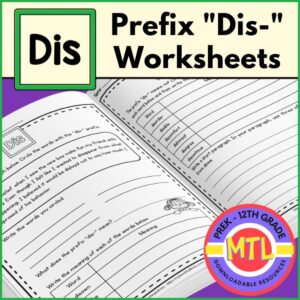 $1.25Buy Now
$1.25Buy NowTwo worksheets (with answer keys) to give students the opportunity to learn about and demonstrate their knowledge of words with the prefix “dis-“. Students will identify words with the prefix and give their meanings. Students will also demonstrate their ability to use those words within a written paragraph.
-
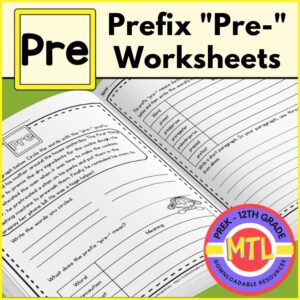 $1.25Buy Now
$1.25Buy NowTwo worksheets (with answer keys) to give students the opportunity to learn about and demonstrate their knowledge of words with the prefix “pre-“. Students will identify words with the prefix and give their meanings. Students will also demonstrate their ability to use those words within a written paragraph.
-
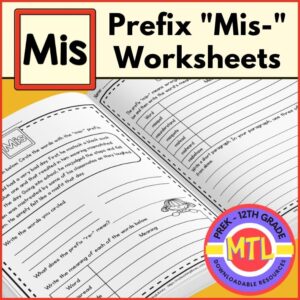 $1.25Buy Now
$1.25Buy NowTwo worksheets (with answer keys) to give students the opportunity to learn about and demonstrate their knowledge of words with the prefix “mis-“. Students will identify words with the prefix and give their meanings. Students will also demonstrate their ability to use those words within a written paragraph.
-
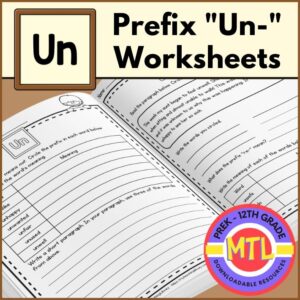 $1.25Buy Now
$1.25Buy NowTwo worksheets (with answer keys) to give students the opportunity to learn about and demonstrate their knowledge of words with the prefix “un-“. Students will identify words with the prefix and give their meanings. Students will also demonstrate their ability to use those words within a written paragraph.
-
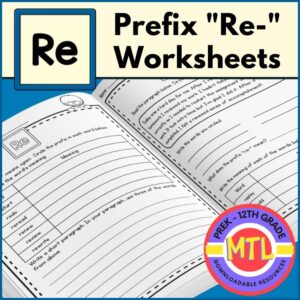 $1.25Buy Now
$1.25Buy NowTwo worksheets (with answer keys) to give students the opportunity to learn about the prefix “re-“. Students will identify words with the prefix and give their meanings. Students will also demonstrate their ability to use those words within a written paragraph.
-
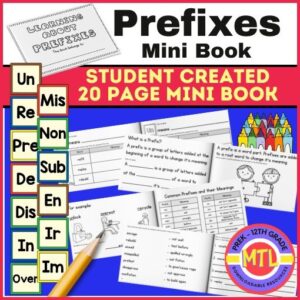 $2.50Buy Now
$2.50Buy NowWhen learning prefixes, this resource will give students the meanings of 13 common prefixes plus it will allow them to demonstrate their understanding through writing the meanings of words with the prefixes, matching words with their meanings and writing sentences. This is a great resource that will have students interactively learning while producing a 20 page mini book they can keep as a reference!
Prefixes included in this student created mini book are re-, un-, mis-, pre-, dis-, over-, non-, in-, im-, en-, de-, ir-, sub-
-
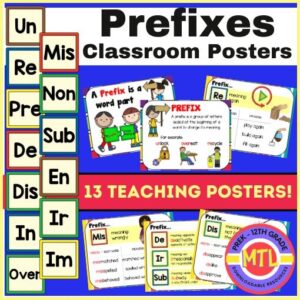 $3.50Buy Now
$3.50Buy NowIntroducing new vocabulary skills to students each year is crucial to their success in school. Sometimes it can seem a little overwhelming when trying to decode words and learn new concepts, but it doesn’t have to be! Teaching prefixes and suffixes is a great way to help your students master vocabulary and unknown words!
This resource concentrates on PREFIXES and provides you with 13 colorful teaching posters to help students learn 13 common prefixes: re-, un-, mis-, pre-, dis-, over-, non-, in-, im-, en-, de-, ir-, sub-
-
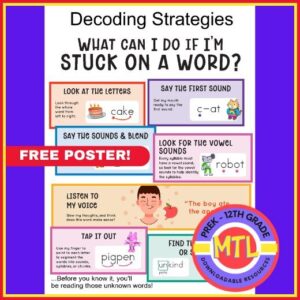 FREEBuy Now
FREEBuy NowHere is a free printable poster which includes a variety of decoding strategies all in one place to aid students struggling to decode new words!
-
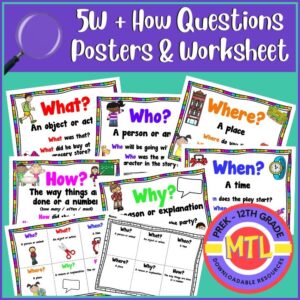 $2.50Buy Now
$2.50Buy NowHelp students learn the basic reading comprehension questions, the 5Ws plus how, with these teaching posters plus a worksheet for practice! There is a colorful, fun poster for each question (who , what, where, why, when and how) plus a poster showing all six. The worksheet gives students the space to write or draw their answers and can be used with any resource.
-
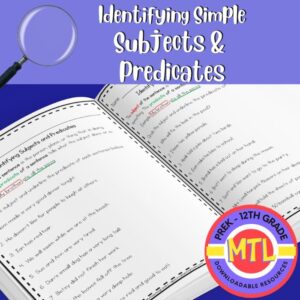 $1.50Buy Now
$1.50Buy NowTwo worksheets for students to use to demonstrate their ability to identify a simply subject and predicate within a sentence! Answer keys are included.
-
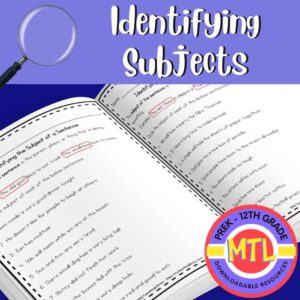 $1.50Buy Now
$1.50Buy NowTwo worksheets for students to use to demonstrate their ability to identify a simply subject within a sentence!
-
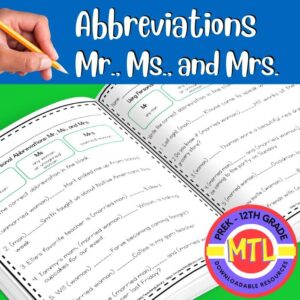 $1.50Buy Now
$1.50Buy NowThis resource is designed to give your students the opportunity to practice and/or to show their knowledge of the correct use of the personal abbreviations or Mr., Ms., and Mrs.
-
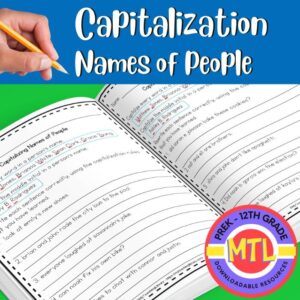 $1.50Buy Now
$1.50Buy NowOne important rule to learn early is to capitalize the names of people. This resource gives students the opportunity to practice or demonstrate their knowledge of capitalizing the names of people when rewriting given sentences.
-
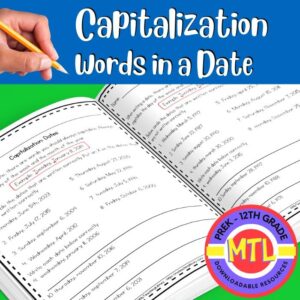 $1.50Buy Now
$1.50Buy NowDays of the week and months of the year are always capitalized. This resource gives students the opportunity to identify dates written correctly as well as to write dates demonstrating their knowledge of capitalization.
-
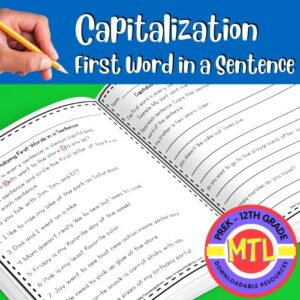 $1.50Buy Now
$1.50Buy NowOne of the first capitalization rules taught is to always capitalize the first word of a sentence! This resource gives students the ability to practice identifying the capitalization of first words as well as practice using the rule when copying given sentences.
-
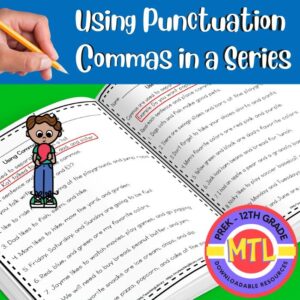 $1.50Buy Now
$1.50Buy NowGive students the practice they need to correctly use commas in a series with this resource! Includes two worksheets, one that will ask students to identify commas correctly used in a series and one that will have students place commas where they should be.
Use as practice during initial learning, for review or as an assessment.
